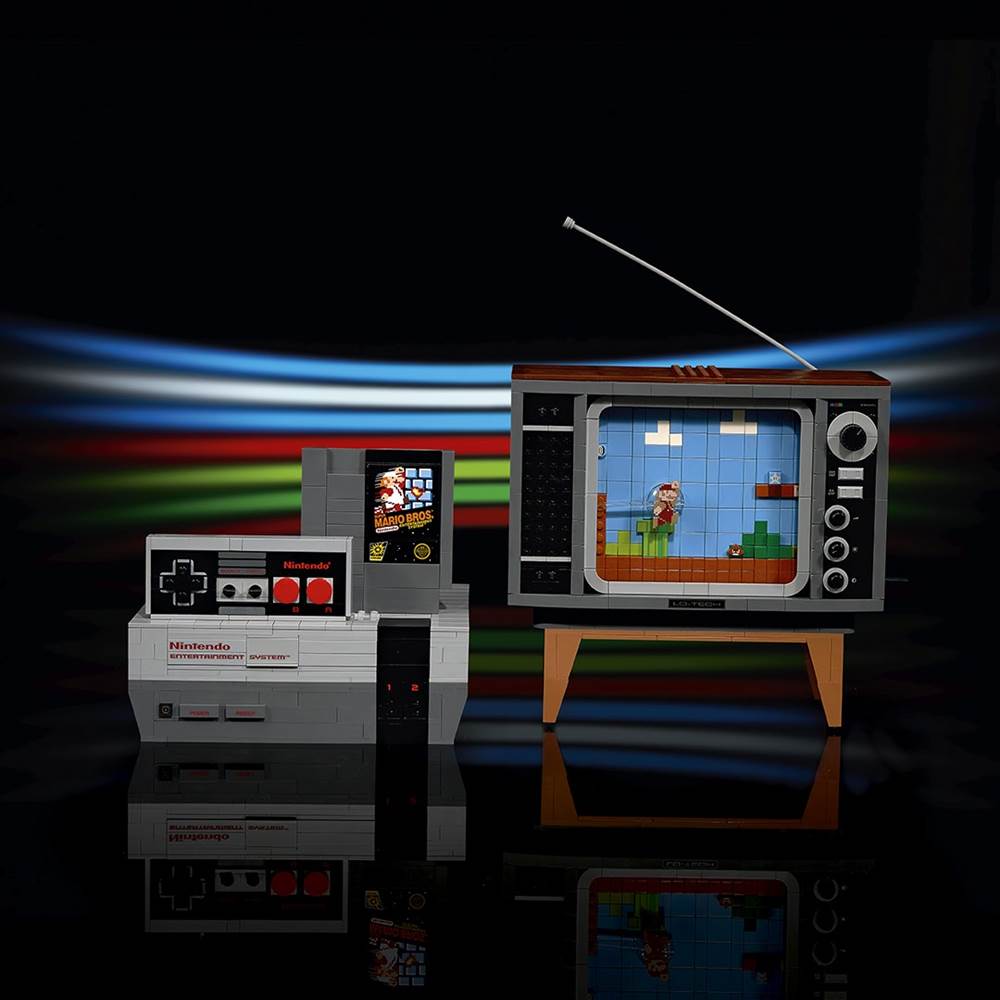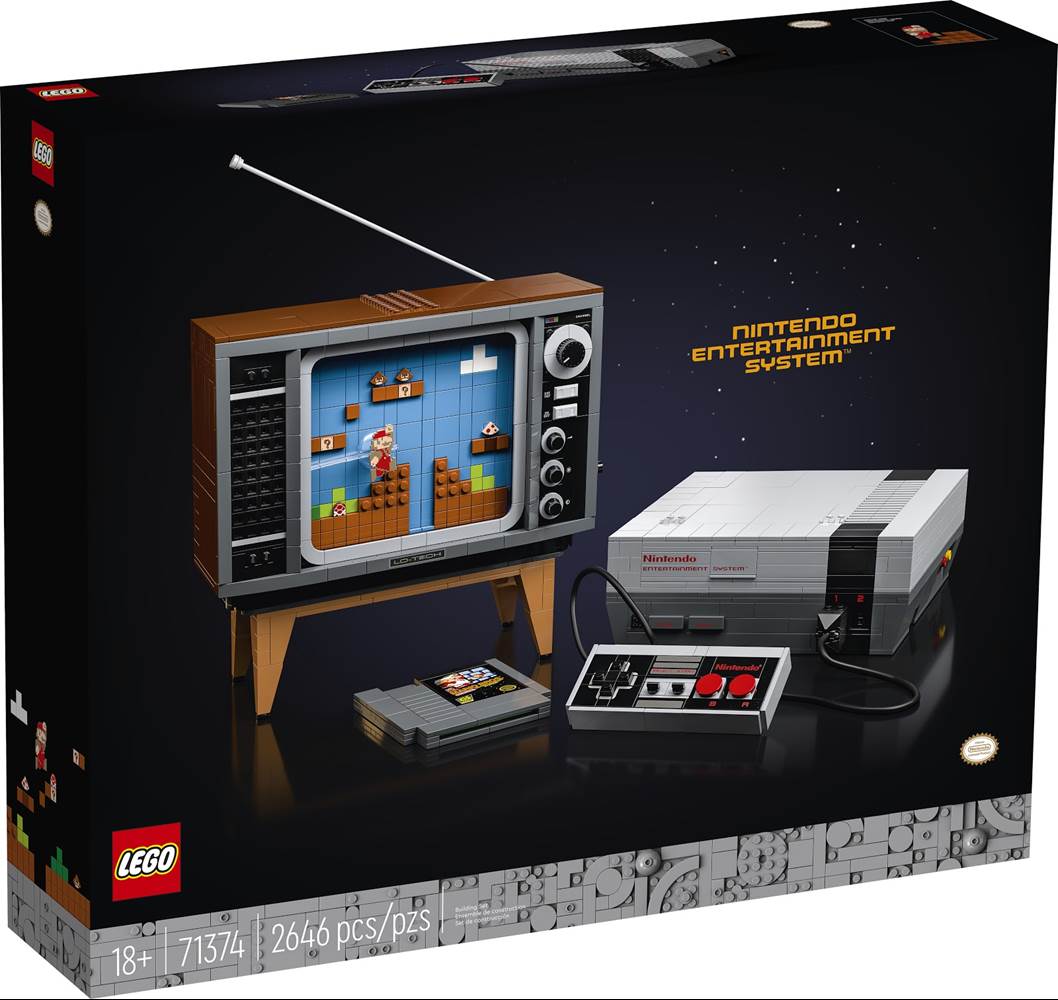LEGO Announces Nintendo Entertainment System Building Set, Replicates 1980s Gaming Console
It’s been an exciting summer for fans of both LEGO and Nintendo. Last month, the popular toy company revealed the full lineup of its upcoming Super Mario interactive building sets, and this morning LEGO followed up on that news by announcing the incredibly cool Nintendo Entertainment System set, which replicates the mid-1980s gaming console down to every last detail.
LEGO’s Nintendo Entertainment System comes with a brick-built NES (classic controller included, of course), a Super Mario Bros. game cartridge, and a period-appropriate color television set with a turnable crank that causes the in-game landscape to scroll by as Mario jumps to avoid obstacles and flatten Goombas.
[gallery ids="1080123,1080125,1080127,1080129,1080130,1080132,1080134,1080135"]
What’s happening:
- LEGO has announced set #71374 Nintendo Entertainment System, which includes 2,646 pieces and replicates the famous 1985 NES video game console, Super Mario Bros. game cartridge, and a small TV set.
- This building set is recommended for adults ages 18 and up.
- The LEGO Nintendo Entertainment System will include a controller with a connecting cable and plug and even an opening slot for the Game Pak with a locking feature. The retro TV features a flat 8-bit Mario figure on the scrolling screen.
- Fans can scan an included action brick with LEGO Mario from the LEGO Super Mario Starter Course, so he reacts to on-screen enemies, obstacles and power-ups.
- The set retails for $229.99 on the official LEGO shop-at-home website and will be released Saturday, August 1.
What they’re saying:
- Maarten Simons, Creative Lead on LEGO Nintendo Entertainment System at the LEGO Group: “Super Mario has been a cherished figure in the gaming world for over thirty years now. Many adults still fondly remember that first time they saw Mario leap across the small screen, even if the graphics were a lot simpler than they are today. With the LEGO Nintendo Entertainment System, we’re letting them truly indulge in that nostalgia, recreating one of the most-loved consoles of all time so they can see the Super Mario from their childhoods once again – and even to share the experience of gaming in the 1980s with their own children.”


